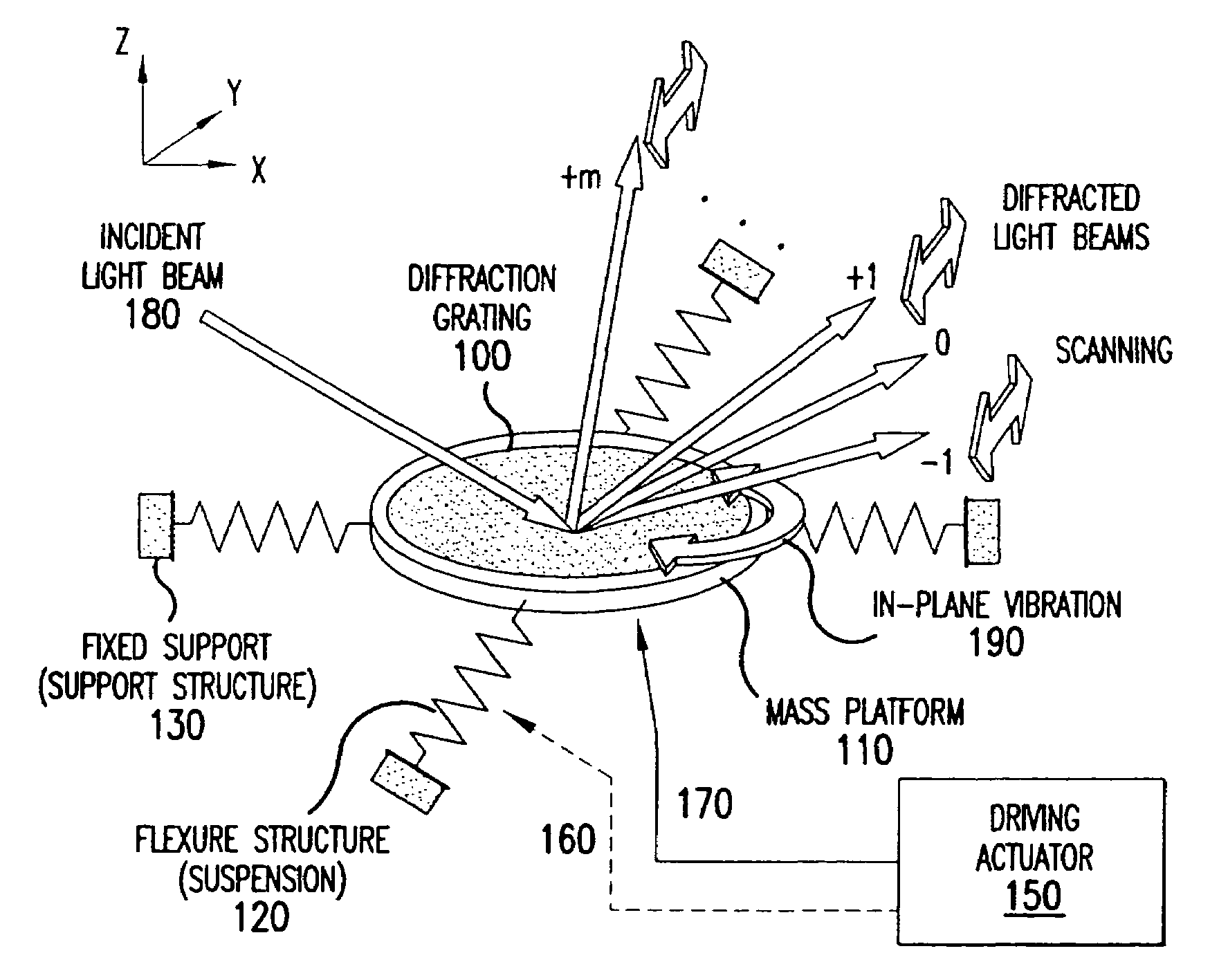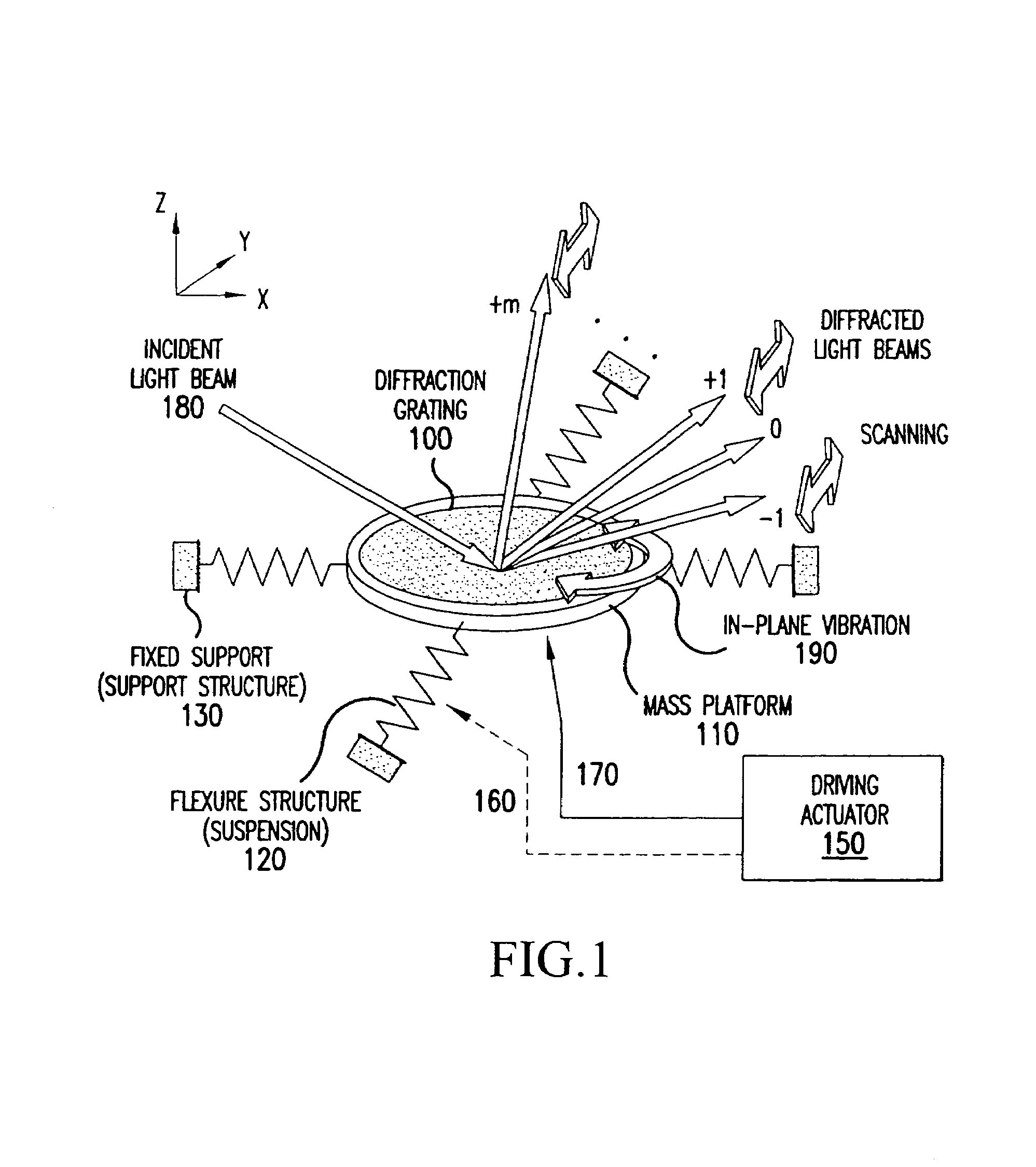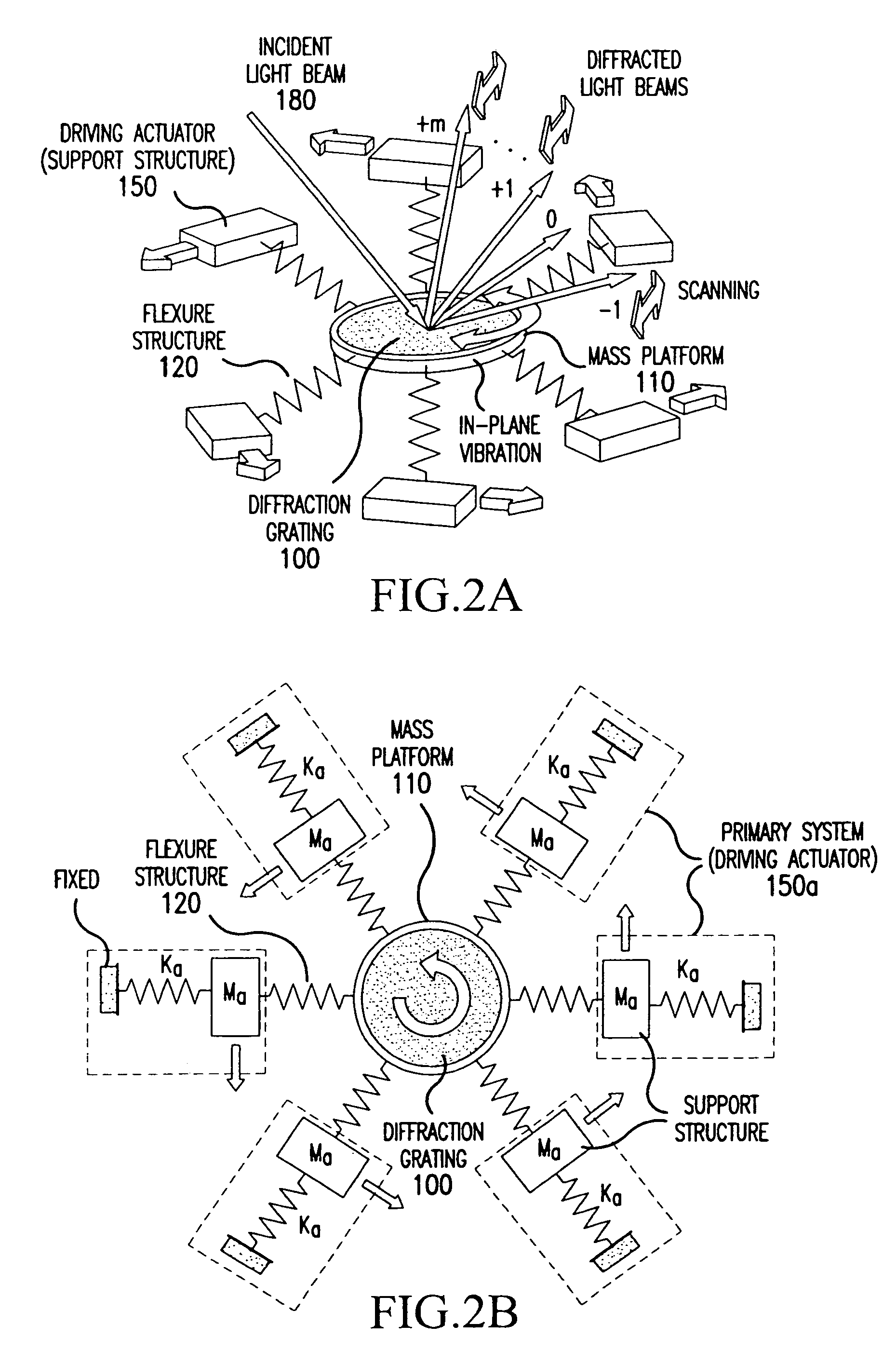Optical scanning using vibratory diffraction gratings
a technology of vibratory diffraction grating and optical scanning, which is applied in the field of optical scanning system, can solve the problems of large dynamic mirror deformation (greater than /8 mechanical), adversely affecting optical resolution, and dynamic deformation of the mirror plate, and achieves enhanced optical resolution, low operating voltage, and high scan frequency
- Summary
- Abstract
- Description
- Claims
- Application Information
AI Technical Summary
Benefits of technology
Problems solved by technology
Method used
Image
Examples
examples
[0097]FIG. 18 shows an SEM image of the central part of the vibrating grating laser scanner fabricated and tested according to the fourth embodiment of the present invention shown in FIG. 12.
[0098]The resonant grating scanner was fabricated using a 3-layer Polysilicon surface micromachining process. The vibrating structures including the electrostatic comb-drive and diffraction grating was suspended 2 μm above the substrate by 8 sets of folded-beam flexures with beams having a length of 300 μm, width of 3 μm and thickness of 3.5 μm, and 2 sets of folded-beam flexures with beams having a length of 180 μm, width of 2 μm and thickness of 2 μm. This free-standing design eliminates any contact-friction between the vibrating structure and substrate. Two opposing interdigitated laterally-driven electrostatic comb-drives, each having a total number of 123 movable fingers with finger length of 50 μm, width of 3 μm, thickness of 3.5 μm, finger gap of 2 μm and overlap length of 25 μm, were use...
PUM
 Login to View More
Login to View More Abstract
Description
Claims
Application Information
 Login to View More
Login to View More - R&D
- Intellectual Property
- Life Sciences
- Materials
- Tech Scout
- Unparalleled Data Quality
- Higher Quality Content
- 60% Fewer Hallucinations
Browse by: Latest US Patents, China's latest patents, Technical Efficacy Thesaurus, Application Domain, Technology Topic, Popular Technical Reports.
© 2025 PatSnap. All rights reserved.Legal|Privacy policy|Modern Slavery Act Transparency Statement|Sitemap|About US| Contact US: help@patsnap.com



